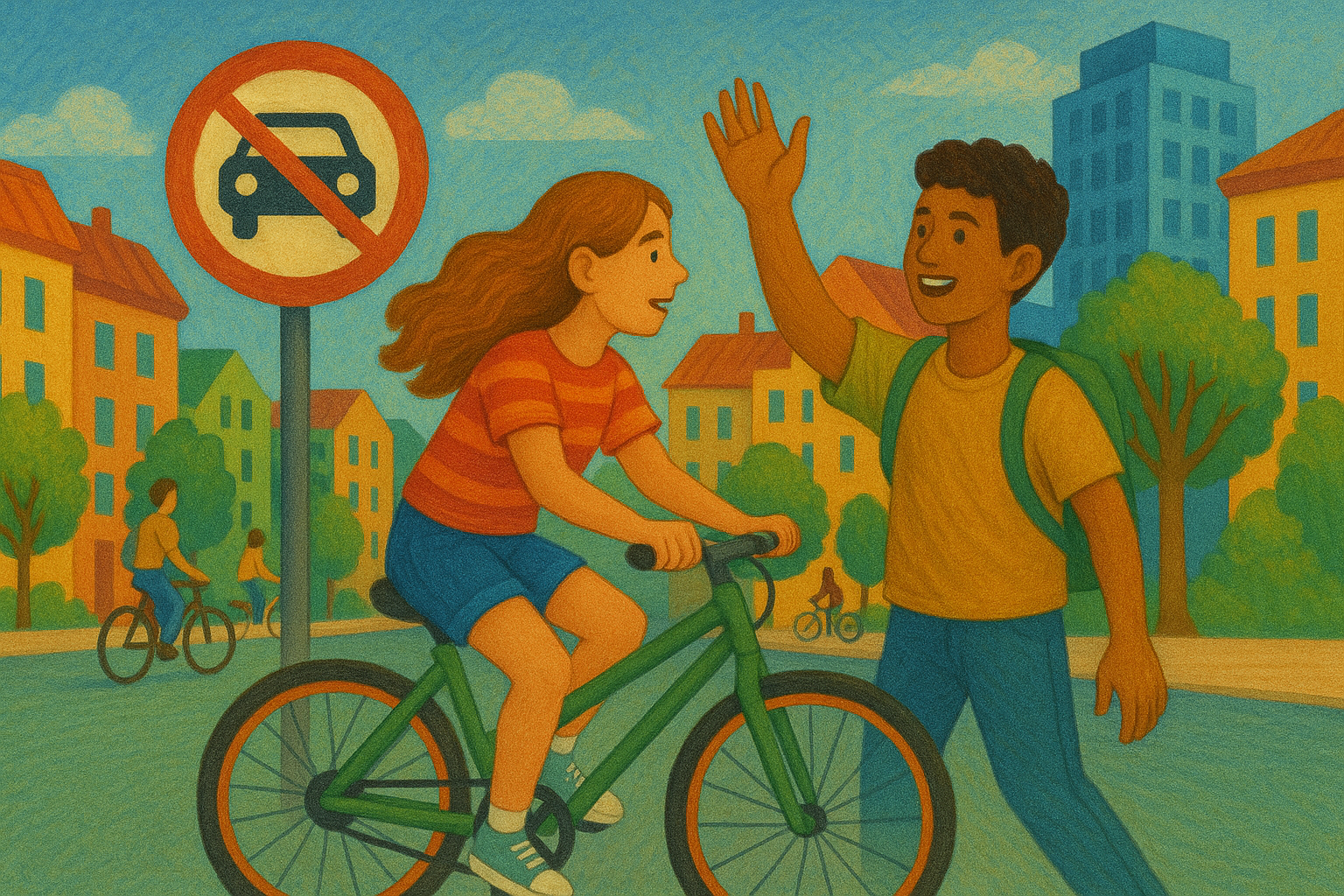Car-Free Cities: The Next Generation’s Dream
As urban areas become increasingly congested, the call for car-free cities is gaining momentum, driven by youth movements advocating for walkable, bike-friendly environments. This vision for the future is not just about reducing traffic; it’s about reimagining our cities as vibrant, accessible spaces that prioritize community and the environment.
The Rise of Car-Free Movements
Across the globe, younger generations are championing the cause for urban spaces that prioritize pedestrians and cyclists over automobiles. In cities like Amsterdam and Copenhagen, where cycling is a way of life, we see successful models that could inspire other urban centers. These examples highlight the benefits of reduced pollution, improved public health, and enhanced quality of life.
Global Examples of Successful Car-Free Initiatives
In 2020, Barcelona introduced a new initiative to reclaim street space for pedestrians. The “Superblocks” program aims to reduce car traffic in designated areas, allowing neighborhoods to flourish with green spaces, outdoor dining, and community events. Similarly, Milan has implemented a temporary car ban in its historic center, leading to a significant decrease in pollution levels.
The Benefits of Car-Free Living
Transitioning to car-free cities offers numerous benefits that extend beyond environmental sustainability. Here are a few key advantages:
1. Improved Air Quality
Reducing the number of cars on the road significantly lowers carbon emissions and improves air quality, which is crucial for public health. Cleaner air leads to fewer respiratory problems and a healthier population.
2. Enhanced Community Interaction
Car-free spaces encourage social interaction and community building. Streets transformed into pedestrian zones become gathering places where people can connect, fostering a sense of belonging.
3. Economic Growth
Shifting focus from cars to people can stimulate local economies. Walkable areas attract foot traffic, benefitting local businesses and creating vibrant marketplaces.
Challenges to Overcome
Despite the advantages, several challenges remain in the push for car-free cities. Resistance from car owners, the need for substantial infrastructure investments, and concerns about accessibility for all citizens must be addressed.
Addressing Resistance
Many people view their cars as symbols of freedom and independence. To combat this mindset, cities must engage in community outreach, demonstrating the benefits of a car-free lifestyle and providing alternative transportation options.
Investing in Infrastructure
Building bike lanes, expanding public transit, and enhancing pedestrian pathways requires significant investment. However, these upfront costs can lead to long-term savings in healthcare and environmental remediation.
The Role of Technology in Car-Free Cities
Integrating technology is essential for the success of car-free initiatives. Smart city innovations can enhance public transportation systems, optimize traffic flow, and improve accessibility.
Smart Mobility Solutions
Apps that provide real-time information on public transport schedules and bike-sharing availability can encourage more people to opt for sustainable modes of transportation. Technologies like electric scooters and bikes also offer flexible options for short trips.
Data-Driven Urban Planning
Utilizing data analytics can help city planners make informed decisions about infrastructure investments. Understanding traffic patterns and pedestrian behavior allows for better planning and resource allocation.
Eco-Friendly Tips for Sustainable Travel
While advocating for car-free cities, individuals can adopt eco-friendly practices in their daily lives. Here are 12 tips to consider:
- Opt for slow travel to immerse yourself in local cultures.
- Choose local dining options to support community businesses.
- Use trains over flights whenever possible to reduce your carbon footprint.
- Refill water bottles instead of buying single-use plastic.
- Packing light minimizes the environmental impact of travel.
- Respect wildlife and natural habitats during your adventures.
- Offset your emissions through credible carbon offset programs.
- Practice energy and water-saving measures during your stay.
- Volunteer for local conservation efforts while traveling.
- Prioritize experiences over souvenirs to create lasting memories.
- Carry a plastic-free kit to reduce waste on the go.
- Educate others about the importance of sustainable travel practices.
How You Can Get Involved
Getting involved in the car-free movement can start at a local level. Attend city council meetings, join environmental advocacy groups, or participate in community events focused on sustainable urban planning. Your voice matters in shaping the future of your city.
Support Local Initiatives
Engage with local organizations that promote walkability and bike-friendly policies. Whether through volunteering or supporting fundraising efforts, your participation can make a difference.
Advocate for Change
Use social media platforms to raise awareness about the benefits of car-free living. Sharing your experiences and insights can inspire others to consider sustainable alternatives.
Conclusion: A Vision for the Future
Car-free cities represent a transformative vision for urban living, one that prioritizes sustainability, community, and health. As the next generation continues to advocate for these changes, it’s critical for all of us to support and participate in this movement. Together, we can help reshape our cities into greener, more inclusive spaces.
Ready to join the movement? Explore more about travel, technology, and environmental initiatives at Scrollistan Travel, Scrollistan Tech, or Scrollistan Wellness.
